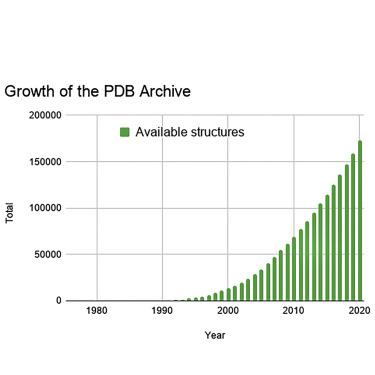Structure ( IF 4.4 ) Pub Date : 2021-05-12 , DOI: 10.1016/j.str.2021.04.010 Stephen K Burley 1 , Helen M Berman 2

|
The Protein Data Bank (PDB) was established in 1971 to archive three-dimensional (3D) structures of biological macromolecules as a public good. Fifty years later, the PDB is providing millions of data consumers around the world with open access to more than 175,000 experimentally determined structures of proteins and nucleic acids (DNA, RNA) and their complexes with one another and small-molecule ligands. PDB data users are working, teaching, and learning in fundamental biology, biomedicine, bioengineering, biotechnology, and energy sciences. They also represent the fields of agriculture, chemistry, physics and materials science, mathematics, statistics, computer science, and zoology, and even the social sciences. The enormous wealth of 3D structure data stored in the PDB has underpinned significant advances in our understanding of protein architecture, culminating in recent breakthroughs in protein structure prediction accelerated by artificial intelligence approaches and deep or machine learning methods.
中文翻译:

开放获取数据:蛋白质结构预测人工智能方法的基石
蛋白质数据库 (PDB) 成立于 1971 年,旨在存档生物大分子的三维 (3D) 结构,作为公共产品。五十年后,PDB 为全球数百万数据消费者提供了超过 175,000 个通过实验确定的蛋白质和核酸(DNA、RNA)结构及其相互复合物和小分子配体的开放访问权限。 PDB 数据用户在基础生物学、生物医学、生物工程、生物技术和能源科学领域工作、教学和学习。他们还代表了农业、化学、物理和材料科学、数学、统计学、计算机科学和动物学,甚至社会科学领域。 PDB 中存储的大量 3D 结构数据支撑了我们对蛋白质结构理解的重大进展,最终通过人工智能方法和深度学习或机器学习方法加速了蛋白质结构预测的最新突破。











































 京公网安备 11010802027423号
京公网安备 11010802027423号